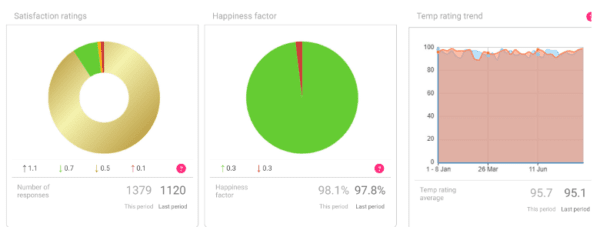In today’s IT dependent world, a good help desk is one of the most important resources companies have for centralized problem-solving and support. In theory, they provide a single location for knowledge and troubleshooting that enables your employees to resolve issues quickly, stay productive and work more efficiently in the face of constantly changing business challenges.
But not all help desks are created equal – here at MainSpring, we’ve learned many lessons from building and improving our help desk over the years, optimizing performance to provide multiple clients with the same standard of rapid IT support. The challenges we have faced recur across multiple organizations, and while overcoming them can be hard, doing so is essential to maintain competitiveness and resilience over the long term.
In this article, we’ll share four of the most common challenges to help desk performance we have encountered, and how we address them.
1. Lack of human support
As consumers, we all know the frustration of dealing with robots when you want to talk to a human being – while automated support has come a long way in recent years, directly speaking to an agent leads to consistently higher satisfaction levels than automated troubleshooting. Getting that support quickly is important, as long wait times lead to frustration and reduced time to resolution (TTR) for support tickets.
At MainSpring, we know that automation can lead to efficiency improvements, especially for simple tasks like updating payment addresses and inquiring about outstanding balances. For that reason, we provide our customers with the option of submitting service requests through a desktop-based client rather than speaking to an agent directly.
At the same time, we know that technical problems can be complicated, and that some clients prefer to talk through their issues. That’s why we believe in implementing personal communication for all help desk calls – to do this, we employ a service coordinator to greet every caller and direct them to the right resources for their problem.
2. Failure to communicate
Aside from fielding calls, service coordinators are vital for another reason: clients need a point of contact to know how support requests are progressing. When resolutions take longer than expected, it can feel like their issue has fallen off the radar, leading to frustrated phone calls and continual escalation. That is why communication – whether good news or bad – is a key component to operating a successful help desk.
Since this role is so critical to a help desk’s success, the search for the right service representative can be a challenging process – it requires the right combination of communication skills, IT expertise and talent for logistics to bridge the gap between clients and technicians while ensuring that support requests are resolved quickly.
The primary job for our coordinators is ensuring that service requests stay in front of our technical staff and don’t get lost in the shuffle. They are constantly monitoring the age of requests and dynamically re-assigning them to optimize workload for technicians. For major client outages, they are a liaison between technical staff and clients – it’s this kind of reliable communication that makes help desks work.
3. Poor team management
It takes a special kind of person to thrive in a help desk environment. It’s challenging, and stressful. Clients are often anxious because a technical problem is preventing them from working and hitting their deadlines. Interviewing for the right combination of empathy and technical skills is crucial for building a great help desk – but guiding your team to the right goal is even more important.
At MainSpring, we have eliminated stress and turnover among technicians by focusing on long-term improvements over short-term results: our team takes the extra time to find and eliminate the root cause behind problems as soon as they arise, reducing call loads and preventing burnout. Not only does this leave technicians with more time to spend on complex issues – it also promotes better customer experience and satisfaction over time.
The following dashboard is an example of what our technicians look at throughout their workday. By constantly collecting real-time feedback from end users, they get the big picture they need to understand the source of a client’s problems – this also helps them to set priorities and manage resources for maximum impact.

4. Lack of meaningful metrics
You’ll never figure out where you’re going if you don’t know where you’ve been. Establishing benchmarks for your key performance indicators (KPIs) and knowing your industry’s best-in-class numbers are both critical to improving and maintaining a sustainable help desk.
There are many managed service providers (MSPs) to choose from, and clients want their problems fixed. Decision makers need to know they’re getting the appropriate return on investment for their support – the ability to demonstrate actual results is crucial for proving the value of your support and optimizing performance over the long term.
Key Help Desk Metrics
Ultimately, the goal of any help desk is not just to resolve tickets fast, but to reduce the amount of support tickets over time by resolving underlying technology issues and increasing your team’s knowledge. At MainSpring, some of the key IT support metrics we keep in front of the entire team and client are:
- Tickets per endpoint (TPE) – this measures how many support tickets are submitted for every server or workstation. A low TPE correlates with higher productivity and resource availability.
- Average resolution time (ART) – this measures how long it takes to resolve each ticket on average. A low ART reflects how well an IT support team has documented an organization’s environment and how quickly they work to resolve issues.
- Reactive hours per endpoint managed (RHEM) – this measures the amount of support time spent for each endpoint. A low RHEM means quick resolution time, a low volume of support tickets and high resource availability.
Putting clients first
A good help desk never loses sight of its primary mission: providing rapid support for their clients, enabling their mission and increasing productivity over time. The best help desks combine the right talent to optimize resolution time and keep clients informed – they rely on real data for continual improvements that reduce costs over time and better prepare organizations for the challenges of today’s constantly changing IT landscape.
For each of the metrics mentioned above, we strive to achieve scores well below the industry average (between 0.2 and 0.5) – this provides us with a clear indication of how well our help desk is performing, and how we can improve, driving reports that we review as a team on a weekly and monthly basis.
MainSpring is your go-to for IT strategy and support. Our award-winning managed services are handled by a diverse team of experts on the cutting edge of business technology, with decades of combined experience serving small-to-medium sized businesses. We adopt a proactive mindset to every customer, taking ownership of your results and working diligently to exceed your business needs. To learn more, contact us today.

